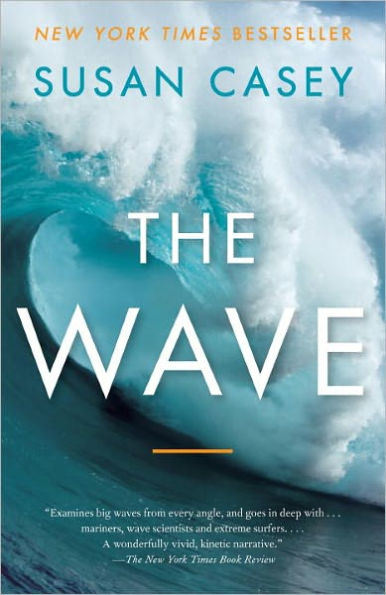A New York Times Notable Book
A San Francisco Chronicle Best Book of the Year
In her astonishing new book Susan Casey captures colossal, ship-swallowing waves, and the surfers and scientists who seek them out.
For legendary surfer Laird Hamilton, hundred foot waves represent the ultimate challenge. As Susan Casey travels the globe, hunting these monsters of the ocean with Hamilton’s crew, she witnesses first-hand the life or death stakes, the glory, and the mystery of impossibly mammoth waves. Yet for the scientists who study them, these waves represent something truly scary brewing in the planet’s waters. With inexorable verve, The Wave brilliantly portrays human beings confronting nature at its most ferocious.
A New York Times Notable Book
A San Francisco Chronicle Best Book of the Year
In her astonishing new book Susan Casey captures colossal, ship-swallowing waves, and the surfers and scientists who seek them out.
For legendary surfer Laird Hamilton, hundred foot waves represent the ultimate challenge. As Susan Casey travels the globe, hunting these monsters of the ocean with Hamilton’s crew, she witnesses first-hand the life or death stakes, the glory, and the mystery of impossibly mammoth waves. Yet for the scientists who study them, these waves represent something truly scary brewing in the planet’s waters. With inexorable verve, The Wave brilliantly portrays human beings confronting nature at its most ferocious.

The Wave: In Pursuit of the Rogues, Freaks, and Giants of the Ocean
432
The Wave: In Pursuit of the Rogues, Freaks, and Giants of the Ocean
432Related collections and offers

Product Details
| ISBN-13: | 9780767928854 |
|---|---|
| Publisher: | Knopf Doubleday Publishing Group |
| Publication date: | 05/31/2011 |
| Pages: | 432 |
| Sales rank: | 51,082 |
| Product dimensions: | 7.76(w) x 5.24(h) x 0.93(d) |
About the Author
Customer Reviews
Explore More Items
It's not just the upcoming O.W.L.
This undated weekly planner notepad features iconic anime style imagery of beloved Harry Potter and
In October 1991 the first of a brutally ferocious series of nor'easters hit the coast of New England. Sebastian Junger, high-climber for tree-removal companies, was writing a book about
Throughout history, humans have been driven by the quest for two cherished ideals: community
The irresistible, ever-curious, and always best-selling Mary Roach returns with a new adventure to the invisible realm we carry around inside.
“America’s funniest science writer”
For two thousand years, eadavers-some willingly, some unwittingly-have been involved in science's boldest strides and weirdest undertakings. They've tested France's first guillotines, been crucified
In a garden surrounded by a tall fence, tucked away behind a small, quiet house in an even smaller town, is an apple tree that is rumored to bear a very special sort of fruit. In this luminous debut
A New York Times bestseller!
"Tender and enchanting" —Southern Seasons
"An endearing tale of surprising second chances." – Booklist (starred review)
The first time Eby Pim saw Lost Lake, it
